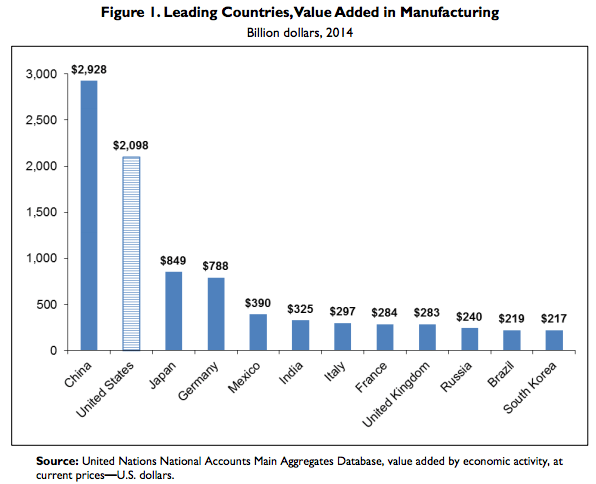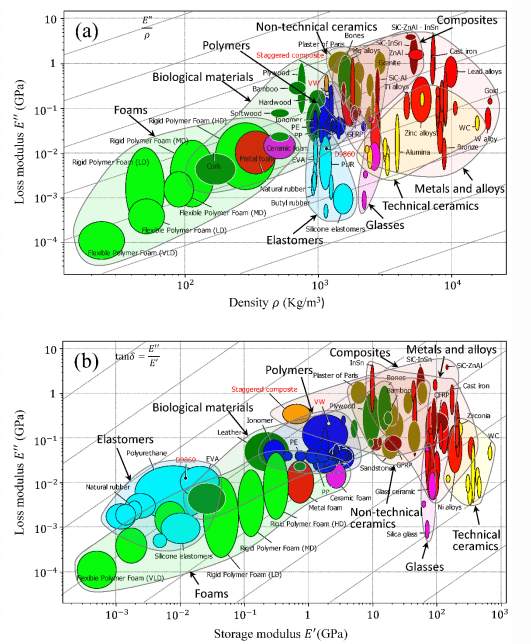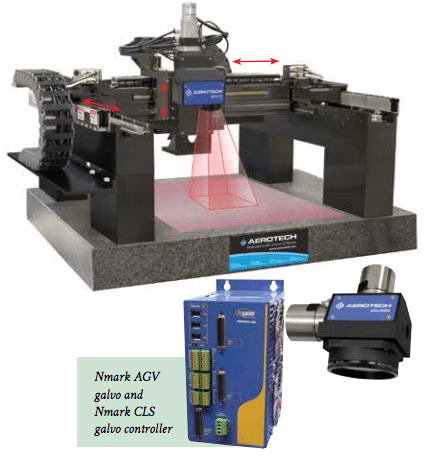The widespread use of 3D printing by manufacturers for production became a step closer today. The University of Pittsburgh received a $350,000 grant to develop models that will, “mitigate the distortions and stresses inherent” in current additive manufacturing processes and builds on fascinating work that combines nature with science.
This grant brings the total funding for additive manufacturing research received by the university’s Swanson School of Engineering since 2014 to $7.2 million. Lead researcher on the most recent project, professor Albert To, took time out to answer a few questions about the research for 3DPI.
The future of manufacturing
Even with some forecasts valuing the 3D printing market at $40 billion by 2020, this is a small fraction of the $12 trillion global manufacturing industry. However, this sector is increasingly returning to favor while fall-out from the previous decade’s financial crisis erodes economic value.

For example, with it’s Area 404, Facebook recently joined the list of software companies like Google who are increasing investment in hardware activities. However, manufacturers seeking to incorporate AM into production and reap the benefits of the technology must contend with a number of issues. On the flipside, hardware manufacturer Cisco is moving towards a software and cloud based future.
Pittt associate professor and principal investigator on the project Professor Albert To explains, “Optimizing the design to compensate for residual distortion, residual stress, and post-machining requirements can take days or even months for these parts.”
Algorithms mimic nature
The grant-winning proposal, “Novel Computational Approaches to Address Key Design Optimization Issues for Metal Additive Manufacturing” will be conducted in two stages over the next three years.
During the first stage the group will develop a thermomechanics model. Professor To explains:
We will run a series of process simulations on different parts and attempt to correlate the deformation to process parameters and different material properties such as thermal expansion coefficient, Young’s modulus, and yield strength.
Young’s modulus is a core area of investigation for many researchers involved with meta-materials. It measures a materials response to exerted pressure, or stress, on one plane, and how the material deforms on a rotated plane.
The second phase of the project involves topology optimization. Topology optimization has seen use in the generation of designs for 3D printed antenna and Formula One racing vehicles. The process can result in designs that look quite unlike anything a designer would normally propose.
However, characteristics such as strength or weight can be dramatically improved through the use of optimization algorithms. The algorithm identifies areas of low mechanical stress in a design and will then remove excess material. In the case of radio antennas the resulting design can even offer improved range.
Professor To includes the mechanics of nano and bio-materials among his research interests. This is fitting because often the results of topology optimization resemble structures found in nature, such as honeycombs or lattices.
Biomimetic is the technical term for a design inspired by nature and To’s previous work investigated the creation of improved polymer composites by mimicking the microstructure found in bone. “By utilizing advanced mechanic theory, we hope to reduce design optimization of additive manufactured parts to minutes, thereby reducing the time of design life cycle.”

Professor To describes the approach topology optimization, saying, “We will use a hybrid approach that combines standard freeform optimization and level-set based approach for optimizing for machining features.”
Other members of the research team include Assistant Professor Sanyeop Lee and Adjunct Professor Stephen Ludwick.
The project will work with, “aluminum and titanium alloy” materials and use, “both the direct energy deposition and laser powder bed fusion processes,” said To.
Prior research demonstrated that by using 3D printing to control the microstructure of a cellar structure it was possible to change the loading curve of a polymer beam.

On a mission
Understanding and optimizing metal 3D printing techniques is the focus of research across the globe. Businesses and publically funded organizations such as the U.S. military’s advanced research lab DARPA are, fuelling what the OECD call the “next production revolution.”
In a recent interview with 3DPI the director of DARPA’s Open Manufacturing program explained how the agency is also working on the qualification and validation of materials and processes. The Rapid Low Cost Additive Manufacturing (RLCAM) effort uses:
“A network of physics based models that model everything from the powder bed to the melt pool, to the laser. We’ve run a series of experiments to calibrate those models so that we understand how these parameters effect the properties and microstructures that are developed within the metal and include some of the environment conditions or starting conditions like the powder size or powder chemistries.”
Lawrence Livermore National Laboratories (LLNL) are working on a multi-physics high fidelity modeling approach that draws upon the labs background in complex computation. LLNL scientists at the federally funded facility initially worked on weapon’s projects, such as developing the Polaris nuclear warhead in the 1950s.
LLNL now work on a broad range of areas, including work to advance additive manufacturing. A recent breakthrough was around understanding the cause of porosity in 3D printed metal components and how to make stronger parts. The lab’s motto is, “Science and Technology on a mission.”
The National Institute of Standard and Technology (NIST) spend a portion of their US$1 billion budget on advancing 3D printing. The additive manufacturing initiative at NIST has a long-term objective of “qualify as you go.” Work done at the Maryland lab uses high-speed cameras and hyperpixel array hyperspectral imaging. This is a measurement-based approach, rather than using physics to model the performance of a 3D printer. The work conducted is complementary to other initiatives and the data collected can be fed into the models from other organizations.
In the U.S. much of this activity is coordinated by America Makes. The organization host regular forums with industry practitioners and academics and have produced roadmaps for the industrialization of 3D printing. Next month algorithms developed under the program are scheduled for release.
Some of the work undertaken by Professor To’s group also benefits from America Makes funding. I asked To how his work ties in with the America Makes’ roadmap and initiatives by other groups such as DARPA’s Open Manufacturing program and LLNL’s work on physics based models.
“This is one of the most critical design issues mentioned in these roadmaps by America Makes, NIST and others. Each researcher attacks this issue a bit differently.”
Pittsburgh, a 3D printing hotspot?
Given Pittsburgh’s long association with the metal industry it might be unsurprising that the “Steel City” is so involved with the next revolution in manufacturing. And although tech companies such as Google or Apple have moved into the void left by the collapse of the local steel industry, the region retains a number of companies in this traditional sector. However, manufacturers now focus on higher value metal products, of which titanium and its alloys are one of the most lucrative.

Pittsburgh based RTI International Metals are a major supplier of titanium mill products and alloys. In July 2015 it was announced the 65-year-old company would become a strategic investor in Norsk Titanium. As previously reported by 3DPI, Norsk Titanium will invest $1 billion over the next ten years building factories capable of 3D printing large-scale components for the aerospace industry.
RTI itself was acquired by Alcoa in March last year. Alcoa are a major company in the metals industry and currently valued at over $13 billion. The company are also targeting the 3D printing market and opened a $60 million plant in Pittsburgh in July this year.
But industrial ventures are not the only metal activity in the area. During 2015 the University of Pittsburgh received several grants from America Makes. The Swanson School of engineering was awarded a total of $2.3 million by the public-private partnership. Dr. To received a portion of these funds to advance his research. This current work is an extension of earlier funds received from the Research for Advanced Manufacturing in Pennsylvania program (RAMP).
Partnering to provide designs and aid with evaluation of the work is motion control specialist, Aerotech Inc. For the company Stephen Ludwick said:
“The tools developed through this collaboration will allow us to produce the complex parts enabled by additive manufacturing with a minimum of trial-and-error and rework. This in turn allows us to design stiff and lightweight components in our high-speed motion systems which are also used by other companies engaged in advanced manufacturing.”
Aerotech make high-throughput gantries and other components used to optimize 3D printing through improved precision in the movement of print heads or build trays. The company also sells the A3200 controller designed to allow real-time kinematics, or the “geometry of motion.”

Earlier this month a $503,000 grant from the National Science Foundation was also announced. These funds are for investigating microstructure formation in metals and alloys. Professor Wiezorek, a mechanical engineer and material scientist at the university, will lead this three-year project. To conduct the research the team will make use of LLNL’s dynamic transmission electron microscope (DTEM).
Professor To explains how the university is addressing additive manufacturing:
“The investment in state-of-the-art AM facilities made by the University leadership four years ago has generated a variety of research activities such as design optimization, process development, materials design, process-microstructure-property relationship, and emerging applications. The location of the University is also advantageous in that it is relatively easy to collaborate with local companies interested in AM such as GE CATA, ANSYS, ExOne, Oberg industries, and many others. These industrial collaborations have opened up many research and funding opportunities for our faculty.”
With this second grant announcement in less than a month the University of Pittsburgh adds to it’s reputation as a center for 3D printing research and the outcomes of these most recent projects are eagerly anticipated.
Featured image is courtesy of sculptor James Jones, an artist who explores the links between digital information and nature



